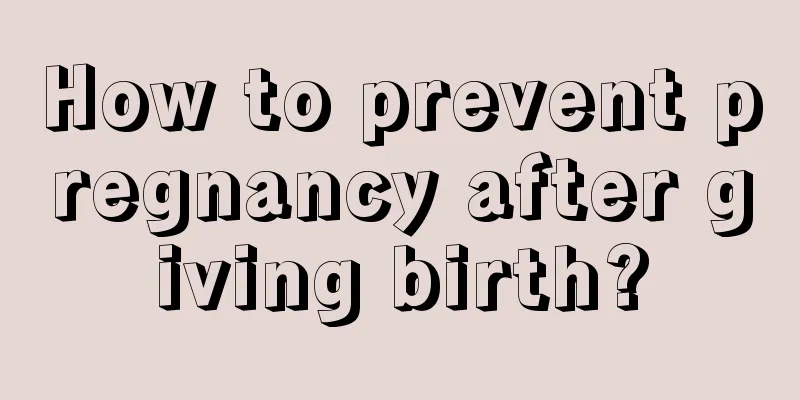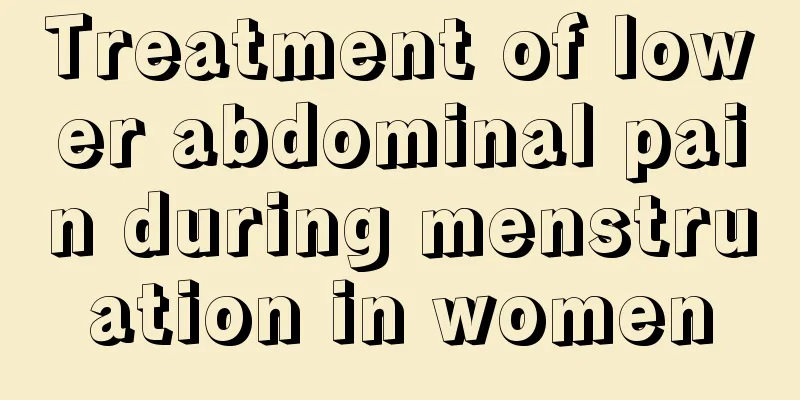What are the symptoms of milk compression?

|
Many unmarried and pregnant mothers do not know what milk compression is. This is a symptom that can only be experienced during breastfeeding. First, both breasts will feel swollen and painful, and they will also feel hot and sore. Generally, there will be no fever, but it may be accompanied by inflammatory infection, and finally lead to fever. If you want to prevent it, you must do these to avoid breast injury and affect the progress of feeding the baby. 1. What is "milk pressing" Mothers who have not experienced it or have just become pregnant may not know what "milk compression" means. As @我是三宝妈2008 said, "milk compression" and "milk congestion" are both caused by improper pressure on the breasts, which leads to blockage of the milk ducts, obstruction of milk discharge, and the formation of congested "lumps". If it is not discharged in a timely and effective manner, it will cause infection of the tissues around the breast and fever. The breast milk manual is divided into three situations: Breast engorgement - Most cases occur 2-5 days after delivery, when both breasts gradually feel swollen, warm and slightly painful. There is usually no fever and the body feels normal. Blocked milk ducts - usually occur suddenly after feeding. Most of the time, it occurs in a local area of one breast, where there will be a little swelling. The skin may not necessarily feel hot, but there may be slight pain in some areas. There is usually no fever and the body feels normal. Mastitis - mostly occurs locally on one breast. The skin in that area will become red, hot and swollen. The body temperature will rise to above 38.5 degrees Celsius. The mother will feel cold and feel like she has the flu. 2. How to prevent and alleviate? How to prevent it? The key is to avoid over-engorgement of the breasts and to keep the milk moving efficiently. If the mother needs to be separated from the baby, she should remove breast milk 8-12 times a day by hand expression or a breast pump. In addition, a bra or clothes that are too tight can easily cause milk duct blockage. In addition, if the mother is under great psychological stress or overly tired, her resistance will be weakened, leading to an increased chance of milk duct obstruction turning into mastitis. As with most breastfeeding problems, an improper latch can lead to poor milk drainage and a condition that makes mastitis more likely. How to treat blocked milk ducts? A blocked duct usually goes away within 24 to 48 hours and does not require any treatment. When a blockage occurs, your baby may be fussy when sucking on the affected breast because the pressure of the lump compresses other milk ducts and milk flow may slow down. What to do if a milk duct is blocked? |
<<: Precautions during early pregnancy
>>: How to treat depression in women
Recommend
Things that we use before going to bed and after getting up, do they have a risk of cancer?
"Remove stains and whiten teeth", "...
Picture of bloody forty days of pregnancy
Spotting during pregnancy is a type of gynecologi...
Should I have sex immediately after a strong positive test?
Having sex during ovulation can effectively incre...
What should I do if my leucorrhea is abnormally tofu-like?
Many girls experience very severe symptoms before...
Using the air conditioner incorrectly puts you in the ICU! The unknown secrets of air conditioning can help you avoid getting sick
The weather is getting hotter and hotter, and man...
He sleeps and I'm crazy! Why don't people who snore wake themselves up? It turns out it's all related to "them"...
This article was reviewed by Tao Ning, PhD, Assoc...
Beware of scammers! These 8 diseases cannot be cured once contracted, and trusting folk remedies can be fatal
Once they are diagnosed with a disease, many pati...
Severe hemorrhoids during menstruation
Some women may experience unexpected phenomena du...
Causes of excessive eye use during confinement
Many female friends who are in the period of conf...
What is the diet for weight loss during menstruation?
Female friends pay great attention to their diet ...
Is the front wall better or the back wall better for vaginal delivery?
In our real life, many expectant mothers think th...
How to prevent polyps from bleeding during pregnancy
Cervical polyp is a very common gynecological dis...
"Da Lang, it's time to drink the soup": Beware of the high blood lipid "trap" behind the heart-warming broth!
Recently, a 31-year-old man named Xiao Ma (pseudo...
Breast pump bleeding
Many pregnant women who have difficulty producing...









